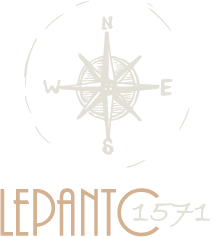The aftermath in the West

“White founts falling in the courts of the sun,
And the Soldan of Byzantium is smiling as they run;
There is laughter like the fountains in that face of all men feared,
It stirs the forest darknesss, the darkness of his beard,
It curls the blood-red crescent, the crescent of his lips,
For the inmost sea of all the earth is shaken with his ships,
They have dared the white republics up the capes of Italy,
They have dashed the Adriatic round the Lion of the Sea,
And the Pope has cast his arms abroad for agony and loss,
And called the kings of Christendom for swords about the Cross,
The cold queen of England uis looking in the glass;
The shadow of the Valois is yawning at the Mass;
From evening isles fantastical rings faint the Spanish gun,
And the Lord upon the Golden Horn is laughing in the sun.”
G.K. Chesterton, Lepanto
And the Soldan of Byzantium is smiling as they run;
There is laughter like the fountains in that face of all men feared,
It stirs the forest darknesss, the darkness of his beard,
It curls the blood-red crescent, the crescent of his lips,
For the inmost sea of all the earth is shaken with his ships,
They have dared the white republics up the capes of Italy,
They have dashed the Adriatic round the Lion of the Sea,
And the Pope has cast his arms abroad for agony and loss,
And called the kings of Christendom for swords about the Cross,
The cold queen of England uis looking in the glass;
The shadow of the Valois is yawning at the Mass;
From evening isles fantastical rings faint the Spanish gun,
And the Lord upon the Golden Horn is laughing in the sun.”
G.K. Chesterton, Lepanto

Despite the relatively short-lived impact of the naval Battle of Lepanto, the symbolism which was attributed to it was enormous. The western powers, even those who did not participate, interpreted (and still interpret) it as the decisive victory of Christianity versus Islam. It inspired the creation of numerous paintings, either immediately thereafter or in the centuries to follow. Many of them had a strong eschatological symbolism. The National Library of Spain in Barcelona preserves a series of engravings, where the battle and the array of the ships in various phases of it, is realistically represented. A similar, albeit more idealized, representation is preserved in the Museo Storico Naval of Madrid, where the role of artillery is emphasized. These engravings, as well as all the others preserved in museums in Germany, Austria, the National Maritime Museum at Greenwich (UK), present an idealized picture of the fleets in symmetry, like plans rather than real battle.

On the contrary, paintings such as the one by Andrea Vicentino, nowadays at the Palazzo Ducale in Venice, focus on the dramatic character of the battle. The view that the victory of the forces of the Holy League was the result of Holy Providence is represented in the fresco by Giorgio Vasari in the royal hall of the Vatican or in the amazing painting by Paolo Veronese, where the upper part of the painting is taken by the appeal of the personified Venice to the Mother Mary surrounded by a chorus of angels and saints. The symbolism of victory is present in several other paintings of purely allegoric character, with personifications of Venice, Spain and the “evil”, i.e. the Ottomans. The most important in this line of works is the painting by El Greco “The dream of Philip II”. Besides figurative arts, the battle of Lepanto inspired literature as well. Prayers and hymns of a religious character were composed in order to praise the triumph of Christianity; the king of England, James VI and I wrote in 1585 what probably constitutes his best poem on the battle of Lepanto and the poet G.K. Chesterton considered the battle still a stirring event in the beginning of the 20th century, so much as to write his wonderful poem with the same title. Although each of the powers seems to claim the laurels of victory for itself (which is also evident in art, depending on the national origin of the commissioner) it is true that the reason why the battle of Lepanto became such a source of inspiration is because it was the result of the unity of the powers of Europe for the defense, at the end of the day, of their common cultural values.
The reception of Lepanto in the East

In the Military Museum of Istanbul a huge relief decorates the exit hall on the ground floor. It bears inscribed names and dates of the greatest (victorious) battles of the Ottoman Empire and the modern Turkish state. The naval battle of Preveza is there. The naval battle of Lepanto is not. For the national historiography of Turkey Lepanto is still considered a dark point. And yet it was not obliterated in the Ottoman sources. Katib Çelebi, author of the monumental work on the maritime wars of the Ottomans, as well as Ibrahim Peçevi, the Hungarian-born historiographer, dedicate lengthy passages to the naval battle of Lepanto. The Ottomans, after all, have always been realists. Their defeat may have hindered their expansion to the west, yet it made them realize that they had to invest more on artillery; they also had to obstruct, as much as they could, the coalition of the western powers, by creating separate expectations to each one of them concerning the financial profits from their collaboration with them and signing, also separately with each one of them and in variant moments, the renowned “capitulations”.
